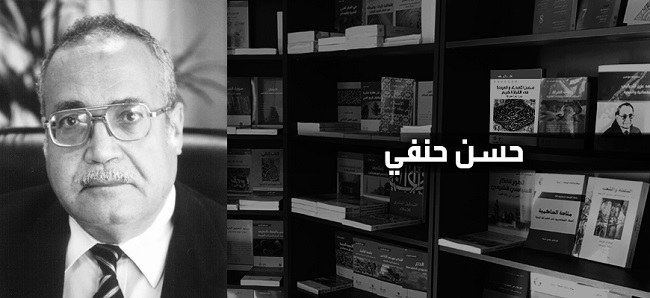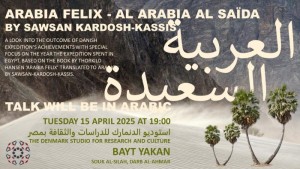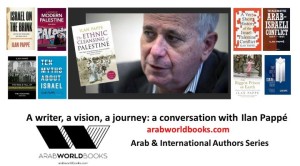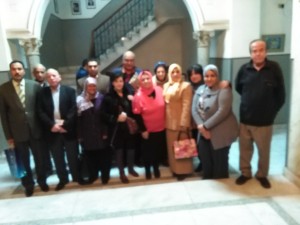Perceiving Arab thought has been characterized for a long period either as simply a repetition of the main arguments of modern and contemporary Western thought and its built-in convictions, or as a continuation of the traditional discourse of Arab and Islamic heritage in their classical sense. However, recent decades have witnessed a transformation in the perception of some aspects of contemporary Arab thought as an area that witnessed creative and innovative contributions of a number of contemporary Arab thinkers and researchers. In the forefront of these names comes the late Egyptian and Arab philosopher and thinker Dr. Hasan Hanafi, who passed away few weeks ago.
Dr. Hanafi had exerted a lot of intellectual efforts in elaborating well defined concepts and notions, as well as through clarifying a new methodology for dialogue with others’ views and ideas. These efforts took place in the context of an overall critical perspective based on critical analysis of the issues that he dealt with. Dr. Hanafi also sought to establish a serious critical school of thought among Egyptian philosophers, which was missing for some time, and in this context we could understand his successful attempt to revive the Egyptian Philosophy Association as one means to reach such an objective.
There is no doubt that the thoughts articulated by the late Dr. Hanafi gave rise, whether in his life time and even after his passing away, to a lively and vivid debates and discussions on several intellectual fronts. Dr. Hanafi was not only a prominent Egyptian and Arab academic figure. He was rather a visionary whose views led to dialogue about them, which he sought and fully respected. He was also keen to benefit from the views of others about his thoughts to further develop his views. In this respect, he never claimed to provide final answers to the important questions posed at the level of Egyptian and Arab philosophy and thought.
It suffices here to refer to the important role played by the late Dr. Hanafi, along with others, in re-establishing the Egyptian Philosophy Association. That Association was originally established in the 1940s by great figures, including the late Ibrahim Madkour and Othman Amin. Dr. Hanafi also played an instrumental role in issuing the annual journal of the Association, which helped providing impetus to launch an active, serious and creative philosophical movement in Egypt and the Arab world. Through the Association and its journal, along with many other fora, Dr. Hanafi posed a number of significant issues that led other Egyptian and Arab philosophers, belonging to different philosophical trends, to either agree, disagree or differ with him, through very constructive dialogues.
In this context, the critical methodology of Dr. Hanafi in engaging others in dialogues never adopted outright rejection; attack; ex-communication or exclusion. His methodology has been critical, objective, scientific and dialogue-oriented, reflecting his deep belief that ideas survive, continue and develop through debates and discussions. Dr. Hanafi has been particularly characterized by linking thought to the surrounding social reality and the relevant historical context, with all their specificities and distinctiveness. This is the case as thought is the conscious outcome of the active interaction between the philosopher and thinker on one hand and the issues and challenges of his living historical context and social reality on the other.
Dr. Hanafi sought to address a problematic that Egyptian, Arab and Muslim thinkers have been trying to resolve over the past few centuries, particularly since the 18th century. I here mean the problematic of the renaissance in the setting of the Arab and Islamic Worlds. He fully realized, through his progressive consciousness, that it has been always a historical problematic as it addresses the nature and characteristics of the historical confrontation between two different cultural and civilizational versions and options, which frequently have been in conflict with each other. This happened despite the fact that each of them led human civilization at different eras of human history. The outcome of such confrontation between them since the 18th century has been that one of them, the Western World, has been dominating and prevailing, full of feelings of victory, while the other, the Arab and Islamic Worlds, have been in retreat and feeling defeat.
While treating such problematic of the renaissance, Dr. Hanafi had to provide new approaches to address several questions that have continuously figured when talking about the problematic of the renaissance in the Arab and Islamic Worlds, including in Egypt of course, over the past few centuries. Among these questions, only to mention a couple of examples, are: “ Why Arabs and Muslims suffered from retreat, while others progressed and advanced?”, as well as: How Arabs and Muslims could constitute an integral part of the modern world without giving up their religious beliefs?”
Historically, the main goal for those Arab and Muslim philosophers and thinkers who addressed the problematic of the renaissance was to reach a formula that would allow the Arab and Islamic Worlds to undertake their renaissance and to be able to achieve human progress in all fields. In most cases, the answer was through one of two options: either to break from the past or to go back to the past and follow its guidelines. In the context of such a long intellectual trip, the consciousness of those thinkers seeking the renaissance became aware of the dilemma of: the enemy/ the model, meaning that the historical adversary, namely the West, who is more advanced in science and technology as well as stronger institutionally, and which, according to Dr. Hanafi, Arabs and Muslims want to reach the same level of progress, while at the same time they want to continue to hold to their spiritual and cultural values and ideals, even if there is a need to reinterpret these values with a view to highlighting their progressive content.
The roots of the reformist intellectual project to which Dr. Hanafi affiliated himself to and sought to revive, but with a progressive direction, originally go back to both Jamalaldin Alafghany and Mohamed Abdou in the 19th century. Its pillars were basically two, which were organically interrelated The first pillar was based on attributing the fundamentals of human progress to Arab / Islamic roots, through perceiving the renaissance of the West and its progress as originating in its bases from Islamic civilization and Arab heritage. The second pillar has been to seek to explain and interpret Islam in accordance with its true message and call, after getting rid of views and opinions that have been attached to Islamic thought over the centuries that do not originally belong to Islam, as well as from practices of Muslims that do not reflect the essence of Islam or its truth. Those opinions and practices in fact reflected times of cultural and intellectual decadence, while during such times the West has been passing by the years of its renaissance and its religious and intellectual reform.
From the perspective of the reformist intellectual project, the real essence of Islam not only does not contradict modernity or impede its achievement, but in reality Islam calls for it in its positive dimensions and is, therefore, in complete homogeneity with most of its pillars and aspects. The mentioned reformist intellectual project has been based on seeing the optimal objective of the deeds of mankind on earth, which is to worship God, including establishing a flourishing human civilization and modernity. The argument goes further to make the point that the need to change to the better is a matter that is linked to the principles of Islamic thought, as change to the better is not only accepted by Islamic thought but it goes beyond that to be among what Islamic thought necessitates, if Muslims correctly understand the message of their religion.
The most important achievement of the new reformist intellectual project, as revived and after acquiring an enlightening and progressive direction with Dr. Hanafi, who considered himself a normal extension of the original project, was to see future progress in the model of the past. In more details, Dr. Hanafi argued that following the path leading to progress and modernity is in line with returning to the correct bases of Islamic beliefs, which are in essence congruent with the essence of progress and modernity in most of their positive aspects that constitute the majority of its components. Over the past three centuries, there were two readings of the Arab Islamic heritage. In fact, these readings reflected the tense dichotomy in dealing with the problematic of the renaissance in modern and contemporary Arab thought. The mentioned dichotomy is the one between authenticity and modernity. The first reading has been committed to defending authenticity, heritage and identity in front of what the proponents of this reading called “imported ideas and doctrines” that “westernizing” forces have been keen to promote and spread among Arabs and Muslims. On the other hand, the other reading considered itself a modernizing one and interprets the status of civilizational underdevelopment prevailing among Arabs and Muslims as resulting from their attachment to past beliefs, which constitute epistemological impediments of scientific and civil progress. Consequently, the proponents of this reading proposed leaving behind such beliefs and the full and unconditional adoption of the values of the “advanced and victorious West”, as they represent the values of contemporary human civilization.
Independent from these two opposed readings, we could see the distinctive, independent and creative intellectual position of the late great Egyptian and Arab philosopher and thinker Dr. Hasan Hanafi, through his innovative methodology that we referred above to its main pillars and components. That methodology aimed at bringing an end to the deadlock and dilemma that Arab thought has been facing when dealing with the dichotomy between authenticity and modernity by placing them in a position of irresolvable contradiction.




